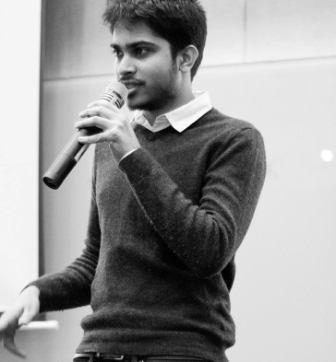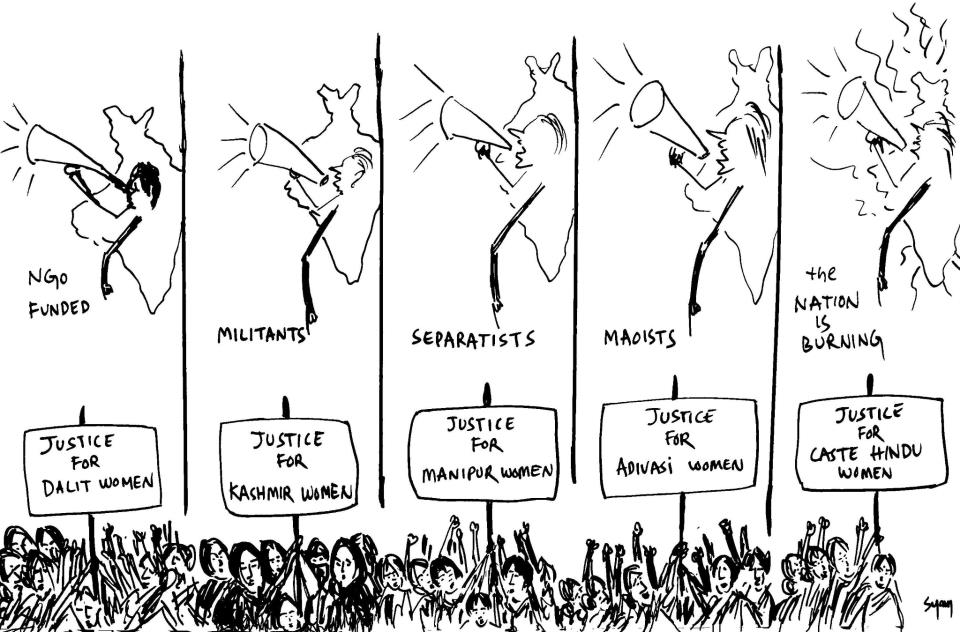Khalid Anis Ansari
 Effective protests have to be purposive, expansive and with a clear sense of the core and subsidiary issues. Moreover, in a first-past-the-post electoral system, it is necessary that the protests aspire to convert a winnable majority to their cause. In a context where the Hindutva-Brahmanical discourse/organizations/parties are hegemonic and aspiring to construct a homogeneous “Hindu” majority by framing the “Muslim” as the antagonistic Other, the crucial challenge for the Anti-CAA protesters at Shaheen Bagh (and other similar spaces) is to win over as many numbers from the so-called majority community as possible.
Effective protests have to be purposive, expansive and with a clear sense of the core and subsidiary issues. Moreover, in a first-past-the-post electoral system, it is necessary that the protests aspire to convert a winnable majority to their cause. In a context where the Hindutva-Brahmanical discourse/organizations/parties are hegemonic and aspiring to construct a homogeneous “Hindu” majority by framing the “Muslim” as the antagonistic Other, the crucial challenge for the Anti-CAA protesters at Shaheen Bagh (and other similar spaces) is to win over as many numbers from the so-called majority community as possible.
CAA is clearly anti-secular and unconstitutional. However, when combined with NPR and NRC it turns lethal for the vast majority of poor and illiterate Indians—particularly subaltern Adivasis, Pasmanda Muslims, OBCs and Dalits—who may not have supporting documentation for varying reasons. One must also add that despite all the doublespeak NPR-NRC is included in the BJP manifesto and it is going to implement it sooner or later unless a reasonable electoral resistance is offered. The key task is to spell out in detail the dangers of the CAA-NPR-NRC to the nation at large and win over the “hearts and minds” of the majority community. Most Muslims are justified in sensing a serious danger in the CAA-NPR-NRC exercise and are protesting against it. However, if they are unable to persuade and win over a critical number from the majority community, particularly the marginalized sections, the protests will operate merely at an ethical level without any fruitful political fallout. I am afraid despite all the sacrifices and efforts of the anti-CAA protesters at Shaheen Bagh and other spaces they seem to be failing in this objective and converting the already converted over and over again.
Since the very beginning, Shaheen Bagh protests have been narrated as a spontaneous upsurge of Muslim women that was triggered by the police violence on students in the neighbouring Jamia Millia Islamia University. The protests were lauded for furthering the agency of Muslim women and rejection of traditional and opportunistic Muslim leadership. However, those who have watched the space closely know that from the early days onward various ideological and interest-based individuals or groups have jostled for ideological hegemony or made instrumental use of the agitation to further their specific ambitions and agendas. One must, however, add that this is not unique to Shaheen Bagh protests but broadly true for all spontaneous movements. For instance, in the Arab Spring mobilizations various organizations of all hues and colours were involved but eventually the most organized among them, the Muslim Brotherhood, was able to capitalise the most. Similarly, in the Shaheen Bagh protests one has noticed politicians from various political parties frequenting them with electoral calculus in mind; Islamists out to recruit fresh cadres buoyed up by a renewed sense of victimhood among Muslims; NGOs smelling funding opportunities and projects; journalists, academics and documentary filmmakers hunting for op-eds, journal articles, book projects and raw footage; leftist organizations indulging in their own emancipatory fantasies; anti-caste groups desirous of a “Dalit-Muslim” alliance and so on.
More specifically, the symbolic ascendance of the Bhim Army and its aspiration to forge “Dalit-Muslim” solidarity at the national level must be evaluated critically. The discourse of Dalit-Muslim unity has two consequences. One, it mischievously displaces the ‘Hindu OBCs’ to the Hindutva camp and does violence to the diverse OBC category which comprises of more than 2500 castes. This also accentuates the secondary Dalit-Shudra contradiction and shifts the gaze away from the primary Savarna-Bahujan contradiction. Two, it stabilizes the monolithic Muslim (minority) identity thereby repressing the caste question within Muslims at one level, and feeding the Hindutva politics at another. No wonder one witnesses the Bhim Army to be often hobnobbing with the Islamist forces usually led by ashraf Muslims. In short, Dalit-Muslim solidarity basically translates to Dalit-(Forward) Muslim alliance and is a typical imperial, bhoodevta logic: red, green, saffron doesn’t matter. It basically consolidates the savarna-capitalist empire while posing as a radical political position. Needless to add, it is absolutely antithetical to the only nemesis for the savarna-capitalist empire: the pan-religious solidarity of subordinated castes.
Having said that, I still don’t think that the hegemony of any specific group is complete. There are committed and engaged activists-individuals working round the clock and the movement still remains largely amorphous with a dispersed decision making. However, there are two logics that have probably inhibited the movement from expanding in politically productive directions. Firstly, most protests have largely been restricted to “Muslim” neighbourhoods despite all the cosmopolitan support. As indicated earlier, in an increasingly polarised society there is a need to chalk out an expansive strategy and maintain diversity in terms of protest sites, participation, and other symbolisms. For instance, why organize protests after Friday prayers and expose the vulnerable Muslim masses to violence as noticed in the state of Uttar Pradesh recently? Secondly, the left-adventurist slogans/strategies like “reclaim the spaces” or “bringing the city to a halt” have probably been embraced without the backing of any sustained mass-work. There are reports that in the recent Delhi violence the strategy of the leftist-feminist organization Pinjda Tod, inter alia, to persuade the Muslim women protesters to block the Jafrabad road may have turned into one of the provocation points in triggering the violence.
Such strategies inadvertently give the edge to the ruling dispensation that has the power of the state along with the representation and communication technologies under its control. So at one level, the anti-CAA protesters have the self-perception that they are working for a Muslim women-led progressive movement (shernis, nanis, dadis), that they are on the right side of history, or that the regime is feeling threatened, and so on. At another level, Hindutva groups have been representing these protest sites as “mini-Pakistans” led by the Tukde Tukde gang/Lutyens’ lobby/Islamist Jihadis out to create public inconvenience by blocking the roads and creating an unnecessary commotion.
Optics matters. It looks like each move made by the anti-CAA protesters ends up as grist to the mill of Hindutva factory. The key question is whether the logic of the anti-CAA protests is converting a significant number from the majority community to its cause? Have sustainable channels been opened where the majority community could be engaged in a meaningful manner on the question of CAA-NPR-NRC? Have the anti-CAA mobilisations moved beyond an ethical complaint to the construction of an effective political counter-configuration? Needless to mention such questions could not have been posed without the heroic and determined resistance of the anti-CAA protesters in the last few months. However, if the symbolism of the anti-CAA protests—both the physical spaces and the vocabulary used—is somehow alienating the majority community further then, especially in the light of the recent Delhi violence, there is a need to do a serious rethink on the extant strategy.
[The author teaches sociology at Glocal University and tweets @KhalidAnisAnsa1. Views are personal.]
~~~










